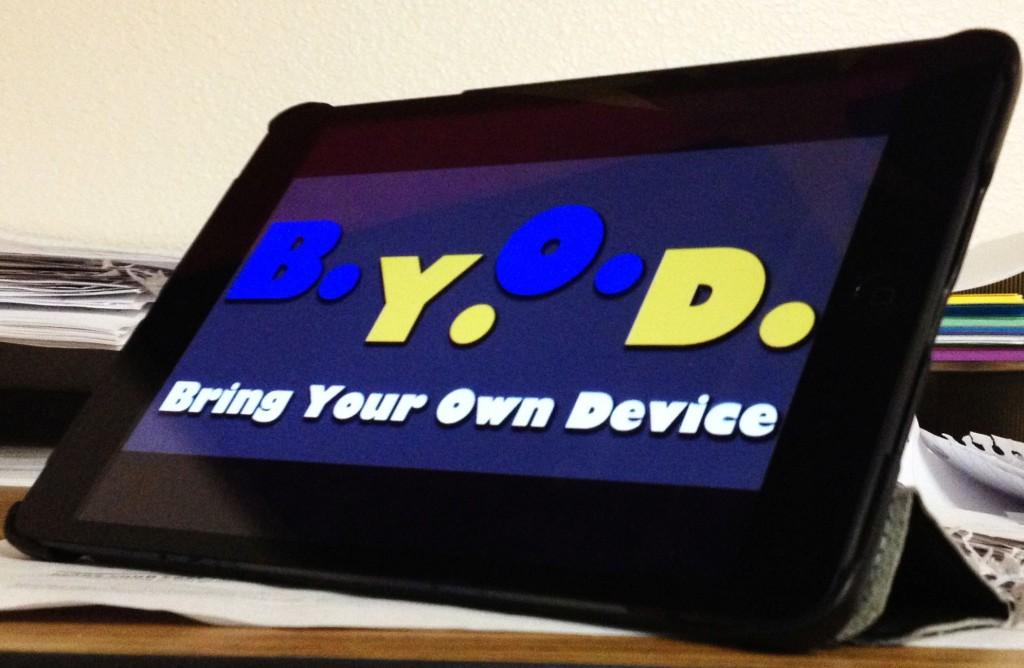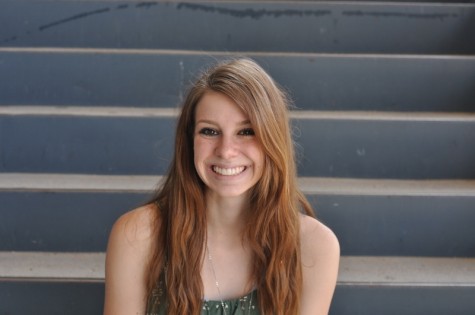Many people tend to gravitate toward the latest innovation, the smartest computer and the newest technology they can get their hands on.
They want the brightest. They want the fastest. They want the best.
OHS has built its curriculum on textbooks, whiteboards and worksheets, teaching students with what it has in order to give them as great a future as possible.
But…times change. And students and teachers do too.
In an effort to move the Deer Valley Unified School District into the technology age, OHS is launching a pilot-program known as BYOD, or “Bring-Your-Own Device.” BYOD allows students to utilize the tablets, smart phones and laptops they already own for an educational purpose.
“[I think] it’s a good way to go,” said Jim Burton, chemistry teacher. “Students are used to using these devices already, so we might as well put them to use educationally.”
In addition to having students bring their electronics into a classroom setting, OHS will receive between 1200-1600 iPad minis that will be checked out to students sometime in January 2014.
To support the amount of smart phones and tablets that will be connected to OHS’s wireless internet network, the school has been rewired. Students will be able and encouraged to hook up their devices to the school’s network.
Some students have already begun bringing devices from home to utilize in their classes.
“I wrote a report for language on my Kindle Fire,” said Aleea Cody, freshman. “I can just pull it straight up without having to flip through pages.”
Not only is the BYOD program contributory to keeping students organized, buying over 1,000 mini iPads also makes sense financially, according to Kelly Gorman, president of the DVUSD Governing Board.
“The mathematics and the money make a lot of sense.” Gorman said. “[Buying] an iPad mini is cheaper than buying textbooks for a student for six or seven classes, and that’s just reality. Textbooks are very expensive.”
To put the cost of textbooks in perspective, when the district implemented common core standards, they spent about 2 million dollars alone on K-8 reading and math textbooks.
“It occurred to us that we were buying textbooks a year in advance, and they were already out of date.” Gorman said. “There’s so much free stuff online, on just about any topic you want.”
The district is leaning toward adopting a program called “flexbooks,” which are free, customizable online documents that can be adapted to the state’s, and even the student’s personal needs.
Flexbooks combine many different aspects of learning, such as traditional text, and multimedia visuals to accommodate each individual student’s learning style.
“I’m surprised at how quickly it’s happening. I think it might work as long as kids don’t get carried away,” said Esreal Delgado, junior.
There are definitely going to be difficulties as OHS implements BYOD, such as the fact that district rules directly outline that students bring electronic devices to school at their own risk.
“I know there will be thievery, and that devices may be broken or dropped,” said Lynn Miller, principal. “How do we handle that? Just like we do with books, and just like we do with cellphones. Students are becoming more responsible whether they know it or not.”
However, devices have already been taken.
“I told my teacher my iPad was stolen, but they can’t do anything about it unless someone returns it,”said Christopher Augustine, freshman.
Along with the threat of burglary or a broken device, teachers and students alike have expressed their concern about whether or not students will use their technology appropriately.
“It just depends on what the district blocks and doesn’t block,” Cody said.
Lightspeed, the current safety system, already restricts students from accessing websites that are not pertinent to the learning environment, and safety systems similar to this will continue to be used throughout the BYOD pilot program.
“There’s safety protocols already there that keep students off sites they’re not supposed to go to. You’re already restricted when you’re on a campus, because the safety is built into the system,” Gorman said.
The issues that will be faced as OHS implements this program go hand in hand with the differing opinions of students and staff on how well the program will do.
“I think its going to work out positively,” Miller said. “How we look at education needs to change to meet the needs of our kids.”
Along with the principal, many teachers and members of the DVUSD governing board support the program, including President Gorman.
“I think it’s something that’s worth trying.” Gorman said. “It’s something we have to try. I wish we could get every kid a laptop, but we can’t do that, and an iPad mini is a great place to start.”
However, some teachers question just how much success BYOD will have.
“Technology is great,” said Paul Whitson, health teacher. “But I think people rely on technology for memories rather than just remembering things. Do you have a brain, or does your phone?”
Students also have doubts about the pilot program and how long it will last.
“It’s going to go away in a year. Because people are going to realize students aren’t doing what they should,” Augustine said.
Along with questioning the ultimate length of the program, some students are worried about getting rid of textbooks for good. Miller, however, has a solution.
“Change is hard,” Miller said, “and people don’t want to change. But I’d just ask the student, “What is it you want to do in the future?” If you go on to a trade school or a college or whatever, you are going to have to learn how to do stuff outside of a textbook.”
Whatever the opinions of the people may be, much of the future of BYOD depends on whether or not the school bond is passed in November.
“What’s happening at O’Connor is really a test program,” Gorman said. “Because if we don’t get bond funding the rest of it will never leave the ground. Assuming the bond passes this November, we’ll get in all the schools within the next five years.”
As far as the future effects of the program on the students of OHS, and hopefully the rest of the district, it might be too early to tell.
“You never know if something works until 10-12 years down the road,” Whitson said. “When students come back and say they appreciate what you did. Then you know, “Hey! This worked!”



